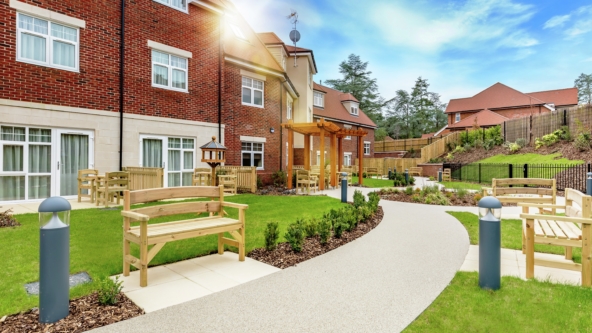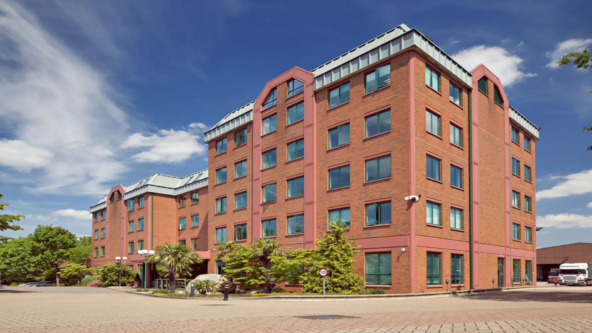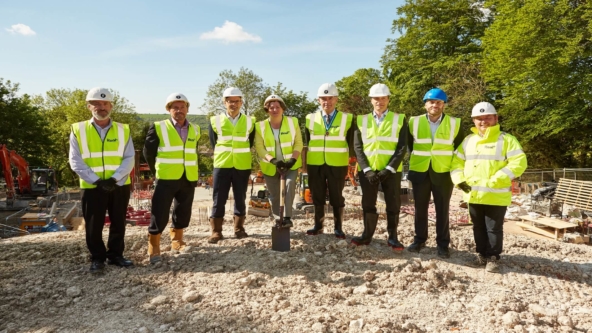Originally published on Institutional Real Estate Inc.
It was Peter Peterson, the co-founder of the Blackstone Group, who first sounded the alarm bells about global population ageing. Back in 1999, his book, Gray Dawn: How the coming age wave will transform America — and the world, warned that the number of retirees in the developed world was growing much faster than its collective workforce. 14 times faster, to be precise.
Our ageing societies have led to some of the largest fiscal and financial dilemmas of the 21st century. With birth rates plummeting in the West, defined benefit pension funds have been forced to close, state retirement ages have been pushed back and higher taxes have been introduced to deal with Europe’s creaking healthcare systems.
For real estate investors, however, improvements in life expectancy have led to the emergence of a niche sector that could deliver a new source of long-term stable income, as Indraneel Karlekar, senior managing director, global research and strategy at Principal Real Estate Europe, points out.
“If you look at the two biggest cohorts that will be consumers of senior living in its various forms, the silent generation born between 1928 and 1945 and the baby boomers from 1946 to 1964, the two account for 110 million people in Europe,” he says. “That’s a significant number.”
It is also a number that is set to grow. Andrew Ovey, head of healthcare at AXA Investment Managers – Real Assets and chief executive officer at Retirement Villages Group, says that according to most official figures, Europe is expected to witness a doubling of 85-year-olds over the next 20 years.
Recent development
In its assessment, AEW credits senior housing with strong demand fundamentals, high occupancy rates, low occupier turnover and a diversified revenue model for the operator. Its figures have shown that alternative property types represented 14 percent of total direct real estate investment volumes in Europe in the first half of 2018, with senior housing making up a substantial portion of that figure. The manager also calculates that later-living properties offer an attractive yield premium of 150 basis points over standard residential investments.
Tony Smedley, managing director and head of European private equity at Heitman, views senior living as a combination of a growth and defensive story. “A well-let care home that is net leased to a high-quality, good-credit operator on good coverage ratios is about as defensive as you can get in real estate today,” he says. “But we think an opportunity exists to capture the long-term growth through strategies such as development of high-end private-pay care homes.”
However, institutional capital has not ventured into the European sector in a meaningful way until recently. This has been due to a historically prohibitive amount of fragmentation and granularity, as Giovanni Perin, managing partner at Threestones Capital, explains: “Until very recently, every deal was €8 to €15 million. Even now, it is hard to find a quality sizeable portfolio.”
In the last three years however, the picture has changed. The growth in nursing home operators within the last 10 years or so has prompted managers and consultants to set their sights on the sector. Companies such as the French Orpea Groupe have evolved from small businesses with a couple of assets, to Pan-European players with operations in several countries. Orpea even has facilities in Brazil and China. Perin says that many of these operators also have double-digit growth plans for the next five years.
“We are in infancy of the market,” he says. “In the last two to three years, there has been increased transparency and the arrival of benchmarks that institutions can refer to. Proportionally, the sector is growing fast, but it is still a very small portion of the real estate market in Europe. It probably represents 4 percent to 5 percent of the market.”
To illustrate the nascent nature of the sector, Smedley highlights the absence of standardised terminology in Europe. In contrast, the United States is comfortable with its set of classifications, which range from age-restricted apartments and independent living, to assisted living and skilled nursing.
The UK, land of opportunity
At present, one of the largest opportunities within the sector lies in the United Kingdom.
Kevin Beirne, director of retirement at Octopus Healthcare, outlines two reasons for the country’s particular appeal. The first is the amount of equity held by older couples who have benefitted from a housing price boom. JLL estimates that the UK’s over-65s hold some £800 billion (€886 billion) in equity. The second is changing attitudes to lifestyle in older age.
“We’re talking about a generation who have a more fluid view of where they live, how they consume, and where they go on holiday. They have a much more aspirational lifestyle,” says Beirne. “Older people now want to have a choice of not only how they manage themselves in later life, but also how they enjoy a lifestyle that they aspire to in later life.”
Another key driver, according to Smedley, is the shift away from government-paid care. Means-testing in the UK has pushed a large segment of the market from basic care homes into private pay stock. This has driven strong demand for high-end care homes, particularly in the wealthier parts of the country.
The general consensus among commentators is that the strongest relative growth will be seen in purpose-built retirement communities. Ovey says that mortality and mobility rates are not growing at the same pace, so there are more seniors who are having difficulties with day-to-day living, but still want to own their own home and enjoy a sense of community. Retirement living developments such as those run by Retirement Villages Group are able to offer this.
“It’s very much helping with the little things,” he says. “We’re setting up an environment where people don’t have to mow the lawn, clean the windows, clear the gutters, or do the vacuuming for their own property. It’s about making life easier and bringing older people together in a community. That helps removes isolation and loneliness, which is linked to deteriorating health.
“We’re trying to deliver vibrant communities for the older generation.”
The emergence of retirement villages as the UK frontrunner in senior housing is down in no small part to a decision made by the UK Law Commission in 2016. This saw the Commission support the continuance of event fees — the percentage of the property’s value that a resident pays back to the operator when an apartment or house is sold off. It imposed a quasi-regulatory regime around event fees, which can also take the form of exit, transfer, deferred management or contingency fees. This, says Beirne, underscored the resilience and attraction of the market: “That was a real landmark decision. It gave investors confidence in event fees, which play a significant role in retirement communities.”
Thanks to the ruling, investors can be confident of building high-quality income through rental or deferred management charges, rather than having to rely on development profits. Phil Bayliss, head of later living at Legal & General Capital, says that this has become the key to unlocking long-term, patient capital. “Creating predictable cashflows is what created the big bang in New Zealand and Australia, when people began building business models that delivered long-term cashflows as opposed to a property development model that just gives you a one-off property development profit.”
Figures from The Associated Retirement Community Operators (ARCO) in the UK suggest that there is capacity within the UK to build more than 230,000 new retirement community apartments over the next 10 years, representing somewhere in the region of £70 billion (€77 billion) of investment opportunity. Bayliss is even more optimistic, suggesting that on the manager’s conservative estimates, the country could deliver 300,000 units over the next decade. “That’s roughly a £100 billion (€111 billion) investment opportunity. That’s the size of the entire commercial property index in the UK.”
There is also a positive wider impact on society that this type of senior living can provide.
Legal & General entered the later living accommodation sector in 2017 with the establishment of Inspired Villages Group, which, as Bayliss explains, allows residents to pay for care as and when they need it. He says that the group’s residents visit hospitals and doctors’ surgeries far less frequently than they would outside of a retirement community. Current estimates show that residents are visiting a doctor 50 percent less and staying in a hospital for 80 percent less time than someone who lives in his or her own home. This has led to an estimated 40 percent reduction in UK government healthcare spend on each resident.
The one possible stumbling block that exists is the issue of freeing up land. “The blocker here is planning permission,” says Bayliss. “We need specific housing targets for specialist older housing because we don’t have it at the moment.
“You get coherent national-level enthusiasm but you get varying degrees of enthusiasm at the local authority level. That dictates the level of interest you get at planning permission.”
Taking care in Germany?
Germany remains a key senior living market, but has come across a recent impasse. According to CBRE, the transaction volume on the German investment market at the end of September last year stood at €1.75 billion, up 137 percent from last year. The consultancy added that a transaction volume of between €2 billion and €2.5 billion was possible for the full year. However, prime yields have fallen below the 5 percent mark for the first time ever.
This has prompted some observers to cool their interest in what they view as a saturated market. Jens Nagel is the CEO of Hemsö’s German arm, a Swedish developer of nursing homes that is 85 percent owned by the country’s AP3 pension fund. He argues that the influx of capital has compressed the yields on the German market to such an extent that new investments are often not sustainable. In such an environment, allocators should wait for prices to become more realistic before entering the German nursing home market. “For short-term investors who are after quick profits, the market in Germany is already saturated, and the returns do not balance the risks anymore,” he adds.
However, the longer-term view remains positive. AEW has reported that only 10 percent of people aged 80 or over currently live in a care home or in senior housing in Germany. But it believes that only 7.5 percent of private dwellings are suitable for people with reduced mobility. The one drawback it has identified is that Germany’s Betreutes Wohnen usually offer more medical services than, for instance, the French résidences services séniors concept, making them more expensive, on a relative basis, than many other European facilities.
Dr. Michael Held, CEO at TERRAGON AG, offers a contrary view. He believes that concerns over the cost of German care homes may be overstated. Following research, the developer has found that 19 percent of senior households in Germany can afford a gross rent as high as €2,500 per month. Another 75 percent of senior households can afford a gross rent of €750. “There is no shortage of demand or purchasing power, and there is a very strong case for investments in senior living facilities in Germany,” says Held.
He also points to three developments that will boost the sector even further. The first is that investors into Germany now have a clear picture of supply and demand; it is thought that the country has a shortage of around 550,000 units in the assisted living segment. TERRAGON calculates that 350,000 residential units are financially viable, meaning that the market has an investment potential of some €64.5 billion.
“Secondly,” says Held, “thanks to the classification system developed by gif [Gesellschaft für Immobilienwirtschaftliche Forschung], which is analogous to hotel categories with one to five stars, we now have a benchmark that offers potential users, developers and our investors a reliable means for assessing investment opportunities.”
The third factor is that as demand for independent living facilities is rising sharply, only a very small number of seniors are able to find a senior living facility in their existing neighbourhood. And in most cases, the facilities are not equipped to offer the range of services and accommodation that people want and can afford. “Accordingly, the number of investment funds and properties geared to senior living is on the rise,” adds Held.
Assessing the risks
Across Europe, a number of closely aligned risks remain with the infant senior living sector.
Paul Jayasingha, global head of real asset manager research at Willis Towers Watson, says that these can be split into three sections — regulatory, reputational and operational.
On the regulatory side, he warns that anything that affects the wider public in the way that senior living does is prone to regulation and the whims of politicians, which can lead to unforeseen risks. It is also the case that regulation and market structures vary substantially from country to country.
To illustrate his point, he highlights the work carried out by the UK’s Care Quality Commission. The regulator provides ratings for senior living homes based on the standard of their care and management. A low rating can have a dramatic impact on an operator’s ability to increase prices, maintain occupancy levels and even, ultimately, pay rent.
Supervision, however, is by no means uniform. Guiseppe Oriani, Europe CEO at Savills Investment Management, says that there is a more relaxed regulatory environment in Italy and some other Mediterranean countries, where the chronic need for beds outweighs the need for strict controls in some cases.
“Of course compliance with regulation is mandatory in order to gain a licence and be permitted to operate,” explains Oriani. “But what is attractive in the Italian market compared with other markets where the level of saturation is higher, is that the need for new beds is so relevant that there is much more of a benign regulatory environment — to the point where certain local authorities may offer some form of support for private enterprises that want to provide these services. They recognise that senior living provides a socially relevant service that generates stable and durable employment and other positive spillovers into the local community.”
Reputational risk follows on from regulatory risk. Jayasingha says that investors must avoid being associated with a poor-quality operator, even if they do not have a direct financial link to them. “You still want to make sure that you’re adding some value to society,” he says.
On the operational side, Andrew Thornton, the CEO of Principal Real Estate Europe, offers some words of caution. “If you look at the affordability of senior living and healthcare, there are some financial pressures that we’ve seen in the UK. Whether that’s food, or fuel, or the minimum wage, these elements have pushed costs up and made the economic viability of a number of models more challenging, particularly those financed by leveraged private equity. That’s not true across all sectors or markets, but it does mean that your operating model and funding and investment strategy have to be all thought through and aligned.”
Oriani also emphasises the importance of operator analysis. He says that, as well as examining the state of their business models, ensuring that a nursing home provider offers high standards and ethical behaviour can also help with mitigating regulatory and reputational risk.
Designs for the future
A further risk lies in not moving with the times. Smedley believes that the biggest challenge to current models of senior housing is the trend toward greater provision of care in traditional residential environments. Heitman’s house view is that there will be increasing demand for properties that combine relatively conventional residential units — but with the ability to bring in care — with high-acuity nursing facilities. Putting these on the same site will allow seniors to “age in place” and give them certainty that they can stay in the same community as their needs change.
Jayasingha says that in-built flexibility within buildings, much like that advocated by some in the modern office market, will become a crucial part of senior living buildings. He has spoken to managers who regularly attend healthcare technology conferences to stay abreast of trends in medical procedures. One told him that 10 years ago a certain medical procedure would have required that a resident use a certain type of room and have a week’s recovery time. Now that exact same procedure needs a quarter of the space and six hours recovery time. “The ability to build a building that has flexible wall space, so you can actually change the internal partitions easily, rather than change the design of the building, is going to become very important,” predicts Jayasingha. “You want to future proof your building.”
Added to flexibility and the “age-in-place” provision is the introduction of further tech within properties for the elderly. As Karlekar says, there has been a wave of new in-house apps introduced into the US market. These allows residents to carry out tasks at the touch of a button, such as ordering food or booking tickets for an event. This results in an efficient interface for the user as well as a continued ability to maintain some degree of independence, which is another important way of preserving health in older age. Karlekar expects the same sort of technology to arrive in the UK and the rest of Europe before too long.
Some 20 years on from the publication of Peterson’s seminal work, the world still has many unanswered questions about increased longevity. But with the growth of the senior living market, it has at least come up with improved ways to house and care for its elderly.







